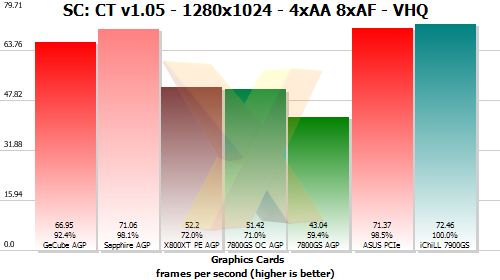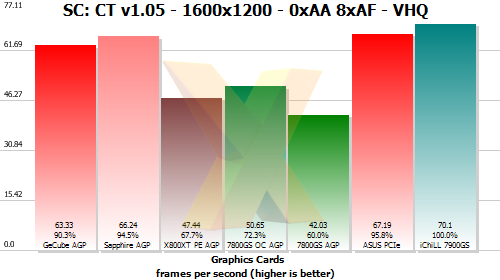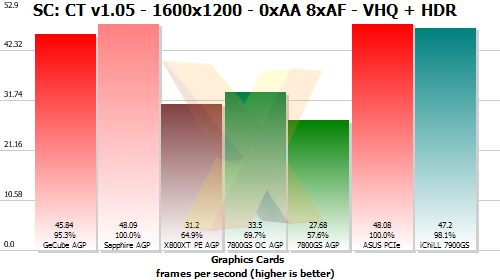Splinter Cell: Chaos Theory performance

Splinter Cell: Chaos Theory performance is more reliant on shading power than the previous two games.
Due to the excellent underlying architecture, we see both AGP-based X1950 Pros pull out decent leads over the other three AGP comparison cards.
Sapphire's 512MiB framebuffer helps pulls performance right up to PCIe 256MiB X1950 Pro levels, too.

The Radeon X800 XT PE suffers at 1600x1200 (no AA, and running SM2.0 path), but most other cards manage to keep performance practically identical to 1280x1024 4x AA 8x AF levels.

Putting on the hurt by adding HDR to the mix we see the X1950 Pro architecture shine through, only matched by a heavily overclocked GeForce 7900GS PCIe SKU from Inno3D. Engines such as Splinter Cell: Chaos Theory show why the Radeon X1950 Pro makes so much sense as a midrange AGP card.
Summary
A couple of things to note from the performance analysis. The first is that the AGP interconnect doesn't unduly restrict the X1950 Pro's performance when evaluated at the likely midrange settings that most folk are going to play games at.The second point is that the Sapphire X1950 Pro AGP card - clocked slightly higher on both core and memory than the GeCube - manages to keep a slight performance lead over its immediate competition. The extra framebuffer doesn't impact upon benchmark results greatly, so, if anything, it's a safety net should you dial up resolution and I.Q. to levels that swamp a 256MiB framebuffer.
On the evidence of our benchmark results, then, we'd be happy enough with an X1950 Pro 256MiB card on the assumption that it will be paired with up either (W)XGA or (W)SXGA+ displays.









